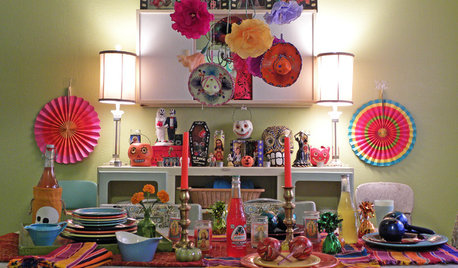rehabilitating a dead lawn
jbrough42
11 years ago
Related Stories

FUN HOUZZHow to Survive an Epidemic of Walking Dead
Tips to use around the house and garden to prep for the zombie apocalypse
Full Story
HOLIDAYSMy Houzz: A Home Comes Alive With Day of the Dead Decor
Sugared skulls and bright paper flowers keep a Texas home's macabre decorating style on the lighter side
Full Story
FRONT YARD IDEASBefore and After: Front Lawn to Prairie Garden
How they did it: Homeowners create a plan, stick to it and keep the neighbors (and wildlife) in mind
Full Story
GARDENING GUIDESHow to Fix Bare and Yellow Lawn Spots
Restore your turf’s good looks by reseeding unsightly patches
Full Story
BEFORE AND AFTERSSee 6 Yards Transformed by Losing Their Lawns
Wondering whether a turf lawn is the best use of your outdoor space? These homeowners did, and they found creative alternatives
Full Story
LANDSCAPE DESIGNGet Along With Less Lawn — Ideas to Save Water and Effort
Ditch the mower and lower your water bill while creating a feast for the eyes with diverse plantings and gathering places
Full Story
EARTH DAYThe Case for Losing the Traditional Lawn
Work less, help the environment and foster connections by just saying no to typical turf
Full Story
LANDSCAPE DESIGN15 Great Ideas for a Lawn-Free Yard
End the turf war for good with hardscaping, native grasses and ground covers that save water and are easier to maintain
Full Story
GREAT HOME PROJECTSHow to Replace Your Lawn With a Garden
New project for a new year: Lose the turfgrass for energy savings, wildlife friendliness and lower maintenance
Full Story
MOST POPULARMeet a Lawn Alternative That Works Wonders
Carex can replace turfgrass in any spot, is low maintenance and adjusts easily. Add its good looks and you’ve got a ground cover winner
Full Story






grass1950
dchall_san_antonio
Related Professionals
Cary Landscape Architects & Landscape Designers · Otsego Landscape Architects & Landscape Designers · Roosevelt Landscape Architects & Landscape Designers · Willowick Landscape Architects & Landscape Designers · Alpharetta Landscape Contractors · Conroe Landscape Contractors · Dickinson Landscape Contractors · Harrisburg Landscape Contractors · Placerville Landscape Contractors · Richmond Landscape Contractors · Tewksbury Landscape Contractors · North Aurora Landscape Contractors · Cedar Hill Swimming Pool Builders · College Station Swimming Pool Builders · Shady Hills Swimming Pool Builderstexas_weed
jbrough42Original Author
jbrough42Original Author
gsweater
texas_weed
dchall_san_antonio
jbrough42Original Author
dchall_san_antonio